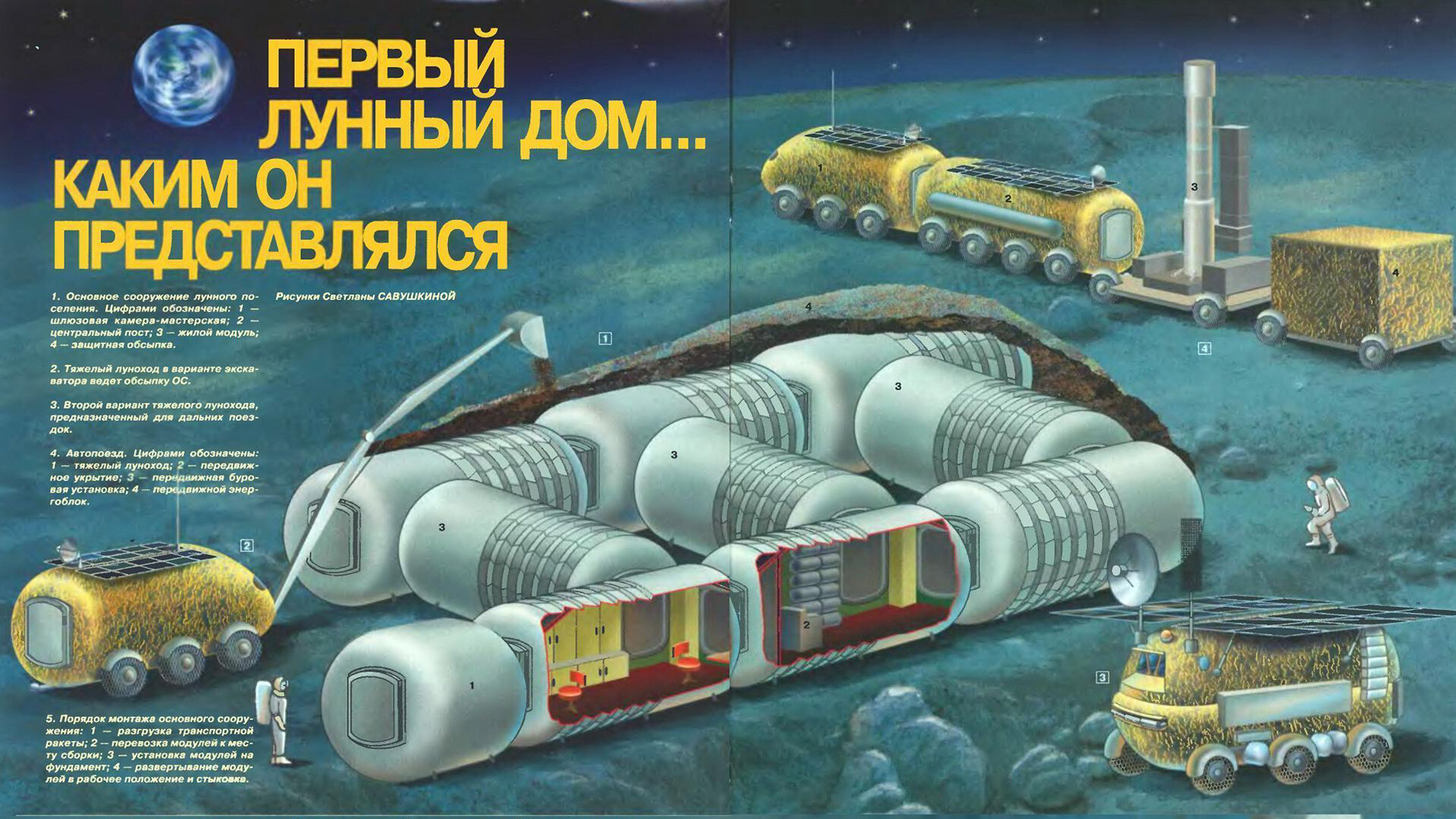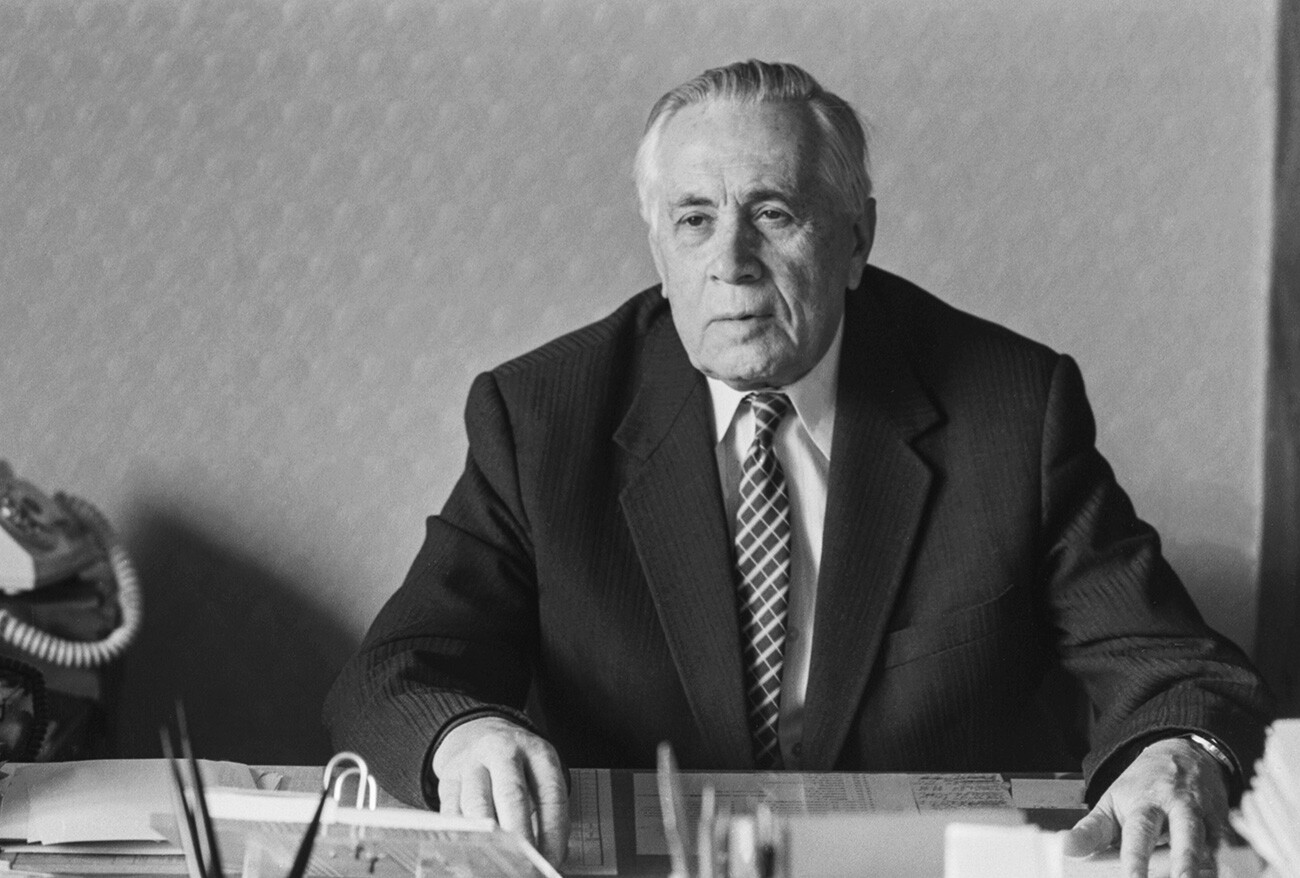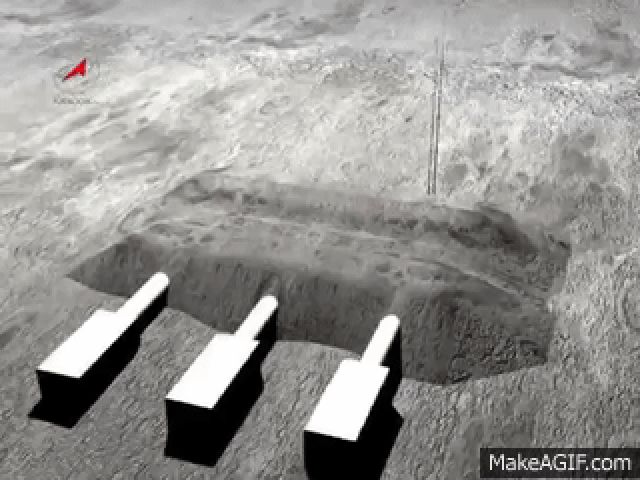
The Soviet Union first developed a plan to colonize the Earth's satellite in 1962. The future lunar base was officially named ‘Zvezda’ (‘Star’) and ‘Columbus’ and, unofficially, ‘Barmingrad’ (‘Barmintown’), after designer Vladimir Barmin, the author of the project.
It was supposed to thoroughly study the area with the help of automatic vehicles and lunar rovers. After that, spacecraft were to transport the modules to the selected site.

Vladimir Barmin.
Albert Pushkarev/TASSEach of the modules weighed 18 tons, had a diameter of 3.3 meters and, in its folded form, reached a length of 4.5 meters. Once in place, it would fold out to 8.6 meters. The prototype of such a module was built and tested in 1967.
There were nine modules in total: a command post, a laboratory, a warehouse, a workshop, a medical center with a gym, a galley with canteen and three living compartments to accommodate up to 12 people.
After installing the modules, the base was to be covered with lunar soil – regolith. It would protect from radiation, temperature fluctuations and micrometeorites. Energy to ‘Zvezda’ would be provided by a nuclear reactor.

Forays on the surface for scientific purposes were supposed to be done in a special lunar train, well protected from environmental influences. It could move at a speed of up to 5 km/h and go on autonomous missions lasting up to 60 days.
However, the ambitious lunar base project never saw the light of day. Its cost of 50 billion rubles (approx. $80 billion) proved to be excessive for the USSR.
If using any of Russia Beyond's content, partly or in full, always provide an active hyperlink to the original material.
Subscribe
to our newsletter!
Get the week's best stories straight to your inbox